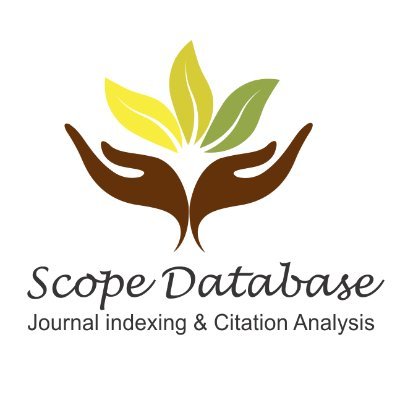Diferencias sociodemográficas y variables predictoras en la percepción de riesgo y resiliencia en la pandemia por COVID-19 en México
DOI:
https://doi.org/10.70298/ConCiencia.9-2.9Palabras clave:
Percepción de riesgo, Resiliencia, Validación de escalas, Pandemia, COVID-19Resumen
La pandemia por COVID-19 ha sido un evento que nos ha marcado en muchos aspectos de la vida. La percepción de riesgo y la resiliencia personal tuvieron un papel importante en las respuestas frente a la pandemia. El objetivo del presente estudio fue analizar la diferencia entre la percepción de riesgo por pandemia del COVID-19 y la resiliencia personal en función de la edad, el sexo y el nivel de estudios en población mexicana, además se buscó identificar los factores que fungen como predictores de las dos variables mencionadas. La investigación se realizó con una muestra de 791 personas adultas utilizando una escala de percepción de riesgo elaborada para el presente estudio y una de resiliencia individual en población adulta durante el periodo de la pandemia en 2020. Ambas escalas mostraron buenos índices de propiedades psicométricas, validez y confiabilidad. En cuanto al análisis se observa que la edad y el nivel de estudios influyen significativamente y son predictoras de las variables estudiadas. Se identificó que las personas con menor nivel de estudios, con menor edad y solteras tendieron a percibir mayor riesgo de la pandemia y las personas adultas y con estudios de posgrado son quienes presentan más altos niveles de resiliencia. Ante este panorama se sugiere tener acciones del manejo, gestión del riesgo e intervención para mejorar las estrategias resilientes, particularmente en este tipo de población en situaciones similares.
Descargas
Referencias
Abir, T., Kalimullah, N. A., Osuagwu, U. L., Yazdani, D. M. N.-A., Al Mamun, A., Husain, T., Basak, P., Permarupan, P. Y., & Agho, K. E. (2020). Factors associated with the perception of risk and knowledge of contracting the SARS-CoV-2 among adults in Bangladesh: Analysis of online surveys. International Journal of Environmental Research and Public Health, 17(5252). https://doi.org/10.3390/ijerph17155252
Babic, R., Babic, M., Curlin, M., Simik, J., Mandic, K. & Patlovic, K. (2020). Resilience in health and illness. Psychiatria Danubina, 32(2) 226-232. https://hrcak.srce.hr/262525
Beebe-Dimmer, J. L., Wood, D. P., Gruber, S. B., Chilson, D. M., Zuhlke, K. A., Claeys, G. B., et al. (2004). Risk perception and concern among brothers of men with prostate carcinoma. Cancer, 100(7), 1537-1544. https://doi.org/10.1002/cncr.20121
Bonanno, G.A. (2004). Loss, Trauma, and Human Resilience: Have We Underestimated the Human Capacity to Thrive After Extremely Aversive Events? American Psychologist, 59(1), 20-28. https://psycnet.apa.org/doi/10.1037/0003-066X.59.1.20
Bronfman, N. C., Cisternas, P. C., Repetto, P. B., Castañeda, J. V., & Guic, E. (2021). Understanding public perception of coronavirus disease 2019 (COVID-19) social distancing on Twitter. International Journal of Environmental Research and Public Health, 18(6), 3114. https://doi.org/10.3390/ijerph18063114
Campbell-Sills, L., Cohan, S. L., & Stein, M. B. (2006). Relationship of resilience to personality, coping, and psychiatric symptoms in young adults. Behaviour research and therapy, 44(4), 585-599. https://doi.org/10.1016/j.brat.2005.05.001
Capone, V., Marino, L., & Park, M. S. A. (2021). Perceived employability, academic commitment, and competency of university students during the COVID-19 Pandemic: An exploratory study of student well-being. Frontiers in Psychology, 12, 788387. https://doi.org/10.3389/fpsyg.2021.788387
Cavazos-Arroyo, J., & Pérez de Celis-Herrero, C. (2022). Intención de vacunarse contra COVID-19 en la población de 40 años en adelante en México. Revista de Salud Pública, 24(2), 1-7. https://doi.org/10.15446/rsap.v24n2.96015
Cipolletta, S., Andreghetti, G. R., & Mioni, G. (2022). Risk Perception towards COVID-19: A Systematic Review and Qualitative Synthesis. International Journal Of Environmental Research And Public Health, 19(8), 4649. https://doi.org/10.3390/ijerph19084649
Codori, A.-M., Waldeck, T., Petersen, G. M., Miglioretti, D., Trimbath, J. D., & Tillery, M. A. (2005). Genetic counseling outcomes: Perceived risk and distress after counseling for hereditary colorectal cancer. Journal of Genetic Counseling, 14(2), 119-132. https://doi.org/10.1007/s10897-005-4062-2
Coulombe, S., Pacheco, T., Cox, E., Khalil, C., Doucerain, M. M., Auger, É., Meunier, S., & Lavoie, K. L. (2020). Risk perceptions of COVID-19 around the world. Journal of Risk Research, 23(7-8), 994-1006. https://doi.org/10.1080/13669877.2020.1758193
Dai, Y., Hu, G., Xiong, H., Qiu, H., & Yuan, X. (2020). Psychological impact of the coronavirus disease 2019 (COVID-19) outbreak on healthcare workers in China. medRxiv. https://doi.org/10.1101/2020.03.03.20030874
Domanska, K., Nilbert, M., Soller, M., Silfverberg, B., & Carlsson, C. (2007). Discrepancies between estimated and perceived risk of cancer among individuals with hereditary nonpolyposis colorectal cancer. Genetic Testing, 11(2), 183-186. https://doi.org/10.1089/gte.2007.9999
Dryhurst, S., Schneider, C. R., Kerr, J., Freeman, A. L. J., Recchia, G., van der Bles, A. M., Spiegelhalter, D., & van der Linden, S. (2020). Risk perceptions of COVID-19 around the world. Journal of Risk Research. https://doi.org/10.1080/13669877.2020.1758193
Fischhoff, B., Slovic, P., Lichtenstein, S., Read, S. & Combs, B. (2000). How Safe Is Safe Enough? A Psychometric Study of Attitudes Toward Technological Risks and Benefits. En: Slovic, P. (Ed.). The Perception of Risk, (80-103). Earthscan Publications Ltd.
Gao, J., Zheng, P., Jia, Y., Chen, H., Mao, Y., Chen, S., Wang, Y., Fu, H., & Dai, J. (2020). Mental health problems and social media exposure during COVID-19 outbreak. PLOS ONE, 15(4), e0231924. https://doi.org/10.1371/journal.pone.0231924
Haas, J. S., Kaplan, C. P., Des Jarlais, G., Gildengorin, V., Pérez-Stable, E. J., & Kerlikowske, K. (2005). Perceived risk of breast cancer among women at average and increased risk. Journal of Women's Health, 14(9), 845-851. https://doi.org/10.1089/jwh.2005.14.845
Ivčević, A., Bertoldo, R., Mazurek, H., Siame, L., Guignard, S., Ben Moussa, A., & Bellier, O. (2020). Local risk awareness and precautionary behaviour in a multi-hazard region of North Morocco. International Journal of Disaster Risk Reduction, 50, 101724. https://doi.org/10.1016/j.ijdrr.2020.101724
Karasneh, R., Al-Azzam, S., Muflih, S., Soudah, O., Hawamdeh, S., & Khader, Y. (2021). Media’s effect on shaping knowledge, awareness risk perceptions and communication practices of pandemic COVID-19 among pharmacists. Research in Social and Administrative Pharmacy, 17, 1897–1902. https://doi.org/10.1016/j.sapharm.2020.04.027
Lazarus, R. S. (2000). Estrés y emoción. Manejo e implicaciones en nuestra salud. Desclée de Brouwer.
López-Vázquez, E., & Marván, M. L. (2018). Introduction to risk psychology. Preventing Health and Environmental Risks in Latin America, 1-12. https://link.springer.com/chapter/10.1007/978-3-319-73799-7_1
Luthans, F., Vogelgesang, G. R., & Lester, P. B. (2006). Developing the psychological capital of resiliency. Human resource development review, 5(1), 25-44. https://doi.org/10.1177/1534484305285335
Luthar, S. S., & Cicchetti, D. (2000). The construct of resilience: Implications for interventions and social policies. Development and psychopathology, 12(4), 857-885. https://doi.org/10.1017/S0954579400004156
Martin, W., & Degner, L. (2006). Perception of risk and surveillance practices of women with a family history of breast cancer. Cancer Nursing, 29(3), 227-235. https://doi.org/10.1097/00002820-200605000-00010
Masten, A.S. (2001). Ordinary magic: Resilience processes in development. American Psychologist, 56, 227-238. https://psycnet.apa.org/doi/10.1037/0003-066X.56.3.227
Melillo, A., & Suárez, E. (2001). Resiliencia. Descubriendo las propias fortalezas. Paidós.
Mellon, S., Gold, R., Janisse, J., Cichon, M., Tainsky, M. A., Simon, M. S., et al. (2008). Risk perception and cancer worries in families at increased risk of familial breast/ovarian cancer. Psycho-Oncology, 17(8), 756-766. https://doi.org/10.1002%2Fpon.1370
Mendes Vieira K., Potrich, A. C. G., Bressan, A. A., & Klein, L. L. (2021). Loss of financial well-being in the COVID-19 pandemic: Does job stability make a difference? Journal of Behavioral and Experimental Finance, 31, 100554. https://doi.org/10.1016/j.jbef.2021.100554
Miceli, R., Sotgiu, I., & Settanni, M. (2008). Disaster preparedness and perception of flood risk: A study in an alpine valley in Italy. Journal of environmental psychology, 28(2), 164-173. https://doi.org/10.1016/j.jenvp.2007.10.006
Naciones Unidas (25 de septiembre de 2015). La Asamblea General adopta la Agenda 2030 para el Desarrollo Sostenible. https://www.un.org/sustainabledevelopment/es/2015/09/la-asamblea-general-adopta-la-agenda-2030-para-el-desarrollo-sostenible/
Organización Panamericana de la Salud (11 de marzo de 2020). La OMS caracteriza a COVID-19 como una pandemia. https://www.paho.org/es/noticias/11-3-2020-oms-caracteriza-covid-19-como-pandemia
Pané, G. H. (2022). Grandes pandemias de la historia. https://historia.nationalgeographic.com.es/a/grandes-pandemias-historia_15178/4
Plapp, T., & Werner, U. (2006). Understanding risk perception from natural hazards: examples from Germany. En: RISK21-coping with risks due to natural hazards in the 21st century (pp. 111-118). CRC Press.
Pontificia Universidad Católica de Chile (UC). (2020). Epidemia, pandemia o endemia. Observatorio de Bioética y Derecho. https://observatorio.medicina.uc.cl/epidemia-pandemia-o-endemia/
Quillin, J. M., McClish, D. K., Jones, R. M., Burruss, K., & Bodurtha, J. N. (2006). Spiritual coping, family history, and perceived risk for breast cancer - Can we make sense of it? Journal of Genetic Counseling, 15(6), 449-460. https://doi.org/10.1007/s10897-006-9037-4
Ramírez, M., & Cardiel, A. (2023). Actualización técnica sobre situación COVID-19 a nivel mundial y en México. Análisis epidemiológico al 28 de abril de 2023. https://www.esm.ipn.mx/assets/files/esm/docs/inicio/2023/05-mayo/02-05-23-actualizacion-de-covid-28abril2023.pdf
Roupa, Z., Polychronis, G., Latzourakis, E., Nikitara, M., Ghobrial, S., Chrysafi, A., & Noula, M. (2021). Assessment of knowledge and perceptions of health workers regarding COVID-19: A cross-sectional study from Cyprus. Journal of Community Health, 46, 251–258. https://doi.org/10.1007/s10900-020-00949-y
Rowe, J. L., Montgomery, G. H., Duberstein, P. R., & Bovbjerg, D. H. (2005). Health locus of control and perceived risk for breast cancer in healthy women. Behavioral Medicine, 31(1), 33-40. https://doi.org/10.3200/bmed.31.1.33-42
Shi, R., Liu, Q., & Wu, G. (2023). Risk Perception and Sense of Public Health Safety: The Mediating Role of Emotional Perception. Sustainability, 15(21), 15632. https://doi.org/10.3390/su152115632
Siegrist, M., & Árvai, J. (2020). Risk perception: Reflections on 40 years of research. Risk Analysis, 40, 2191-2206. https://doi.org/10.1111/risa.13599
Siegrist, M., & Gutscher, H. (2006). Flooding risks: A comparison of lay people's perceptions and expert's assessments in Switzerland. Risk analysis, 26(4), 971-979. https://doi.org/10.1111/j.1539-6924.2006.00792.x
Singh, G., & Gujral, H. K. (2018). Moderating effect of resilience on role stress: A critical review. ZENITH International Journal of Multidisciplinary Research, 8(1), 114-122. https://www.indianjournals.com/ijor.aspx?target=ijor:zijmr&volume=8&issue=1&article=010
Sjöberg, L. (2007). Emotions and risk perception. Risk Management, 9, 223–237. https://doi.org/10.1057/palgrave.rm.8250038
Slovic, P. (1987). Perception of risk. Science, 236(4799), 280–285. http://dx.doi.org/10.1126/science.3563507
Slovic, P. (2000). The perception of risk. Earthscan, Routledge.
Slovic, P., Fischhoff, B., & Lichtenstein, S. (1982). Why study risk perception. Risk Analysis, 2(2), 83-93. https://doi.org/10.1111/j.1539-6924.1982.tb01369.x
Suárez-Ojeda, E. (2001). Una concepción Latinoamérica: La Resiliencia Comunitaria. En: A. Melillo (Ed.), Resiliencia. Descubriendo las propias fortalezas (pp.67-82). Paidós.
Sullivan-Wiley, K. A., & Short Gianotti, A. G. (2017). Risk perception in a multi-hazard environment. World Development. http://doi.org/10.1016/j.worlddev.2017.04.002
Sund, B., Svensson, M., & Andersson, H. (2017). Demographic determinants of incident experience and risk perception: Do high-risk groups accurately perceive themselves as high-risk? Journal of Risk Research, 20(1), 99-117. https://doi.org/10.1080/13669877.2015.1042499
Sundblad, E.-L., Biel, A., & Gärling, T. (2007). Cognitive and affective risk judgements related to climate change. Journal of Environmental Psychology, 27, 97–106. http://dx.doi.org/10.1016/j.jenvp.2007.01.003
Tomczyk, S., Rahn, M., & Schmidt, S. (2020). Social distancing and stigma: Association between compliance with behavioral recommendations, risk perception, and stigmatizing attitudes during the COVID-19 outbreak. Frontiers in Psychology, 11, 1821. https://doi.org/10.3389/fpsyg.2020.01821
Van Doren, T. P., Zajdman, D., Brown, R. A., Gandhi, P., Heintz, R., Busch, L., ... & Paddock, R. (2023). Risk perception, adaptation, and resilience during the COVID-19 pandemic in Southeast Alaska Natives. Social Science & Medicine, 317, 115609. https://doi.org/10.1016/j.socscimed.2022.115609
Vinay, A., Esparbès-Pistre, S., & Tap, P. (2000). Attachement et stratégies de coping chez l’individu résilient. Revue Internationale d'éducation familiale, numéro spécial résilience, 4(1), 9-35. https://www.researchgate.net/publication/352552769_Vinay_A_Esparbes-Pistre_S_Tap_P_2000_Attachement_et_strategies_de_coping_chez_l'individu_resilient_La_Revue_Internationale_de_l'education_familiale_N_special_resilience_4_1_9-35
Vinay, A., Esparbès-Pistre, S., & Tap, P. (2004). Pour une articulation théorique: attachement, coping, résilience. En: E. Palacio-Quentin, J. M. Bouchard, & B. Terrisse (Eds.), Questions d'éducation familiale (pp. 193-208). Montréal: Les éditions Logiques. https://www.researchgate.net/publication/352539372_Vinay_A_Esparbes-Pistre_S_Tap_P_2004_Pour_une_articulation_theorique_Resilience_attachement_coping_in_E_Palacio-Quentin_JM_Bouchard_et_B_Terrisse_Questions_d'education_familiale_pp_193_-_208_Montreal_
Wachinger, G., Renn, O., Begg, Ch. y Kuhkicke, Ch. (2013). The risk perception paradox: Implications for governance and communication of natural hazards. Risk Analysis, 33(6), 1049-1065. https://doi.org/10.1111/j.1539-6924.2012.01942.x
Waterschoot, J., Morbée, S., Soenens, B., Van den Bergh, O., Raemdonck, E., Brisbois, M., ... & Vansteenkiste, M. (2024). Psychological need fulfillment as a source of resilience: Its protective role in concerns and symptoms of anxiety and depression during the COVID‐19 pandemic. Applied Psychology: Health and Well‐Being, 16(2), 632-652. https://doi.org/10.1111/aphw.12508
Descargas
Publicado
Número
Sección
Cómo citar
PLUMX Metrcis

































